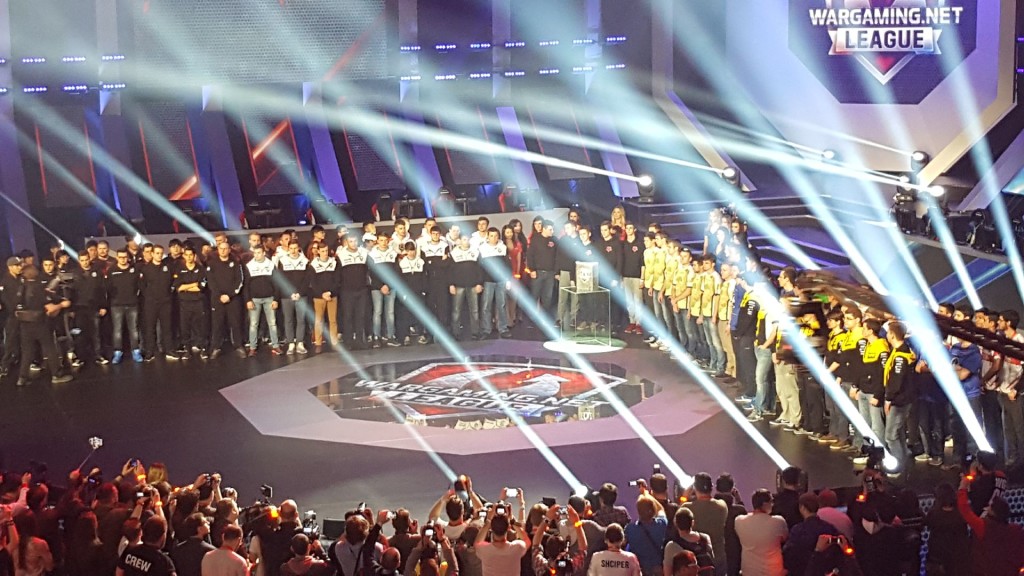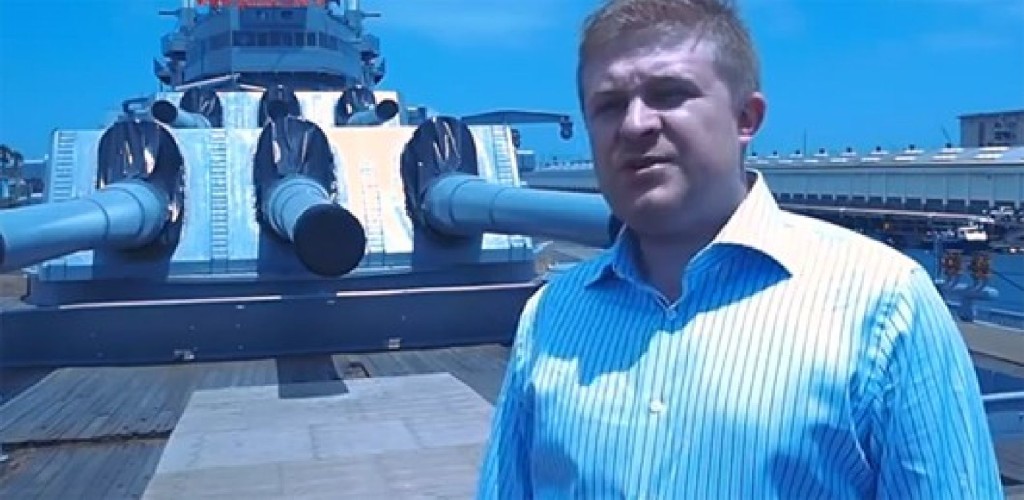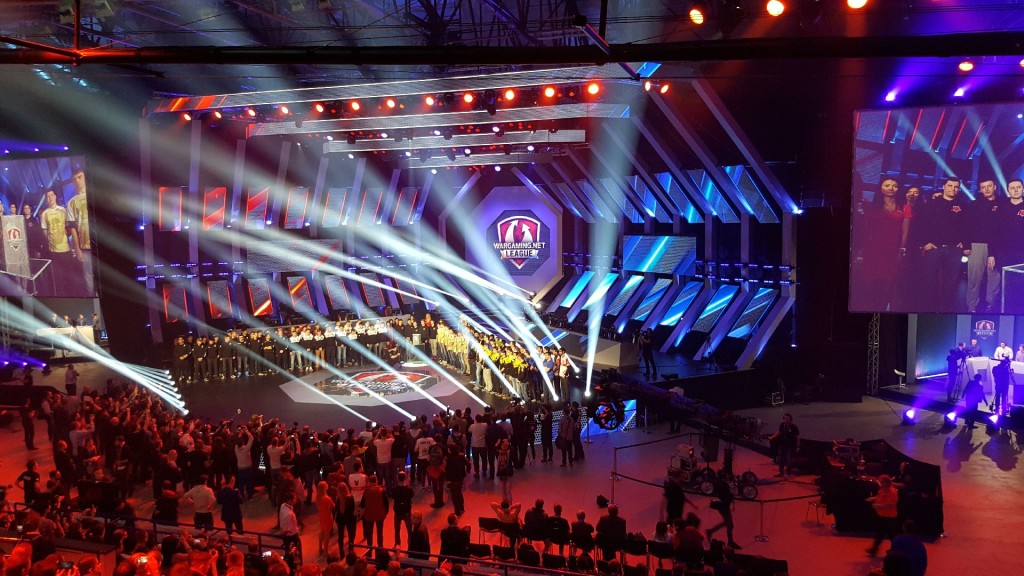Wargaming didn’t design World of Tanks to be an eSport—that’s something that came over time. In fact, over the past three seasons of professional World of Tanks gameplay, just about everything has been tweaked and tweaked again. The ultimate goal is to make the game fun to watch over livestreams on Twitch and ESL, as well as in person in large sports arenas.
The third annual World of Tanks Grand Finals once again took place in Warsaw, Poland, but the venue has grown in size each time. This year, Torwar Hall sold out close to 8,000 fans, who packed the seats to watch the 12 best teams in the world compete over two days in seven-on-seven combat.
Next year, Wargaming will test 15-on-15 eSports gameplay, which is how gamers normally play. The game was streamlining to seven-on-seven for eSports, but if all goes well at next year’s Grand Finals showcase, the league could open the doors for full-on 15-on-15 year-round competition in 2017.
Wargaming CEO Victor Kislyi talked to [a]listdaily about the evolving landscape of eSports, and how the company has continually evolved its game to improve the sports aspect.
 How have you seen World of Tanks expand as an eSport over the last few years?
How have you seen World of Tanks expand as an eSport over the last few years?
We just started three years ago. This is our third Grand Finals and obviously, you can see everything is bigger and better than the year before. We have a bigger venue and more people attended. We’ve already seen an obvious increase in viewership online, which is very important, and we did a lot of things to make these things better. We changed the rules of the game. Now, you play on the top-ten-tier tanks, and the games will be getting faster through some tweaking of the rules.
World of Tanks has always been popular in Russia and Eastern Europe, but this year we saw some solid competition from the North American teams. How have you seen North America rise?
As in any sport, you have to train, you have to spend time, and you have to be passionate to be victorious. The best World of Tanks teams included Brazil, two teams from China, and two teams from America. But all of the predictions last year, that NaVi would win, did not come true. That’s why I love sports, and that’s why I love watching the World of Tanks Grand Finals. I don’t know who will win.
How do you look at what’s being done by other popular eSports companies and apply that to what you’re doing with World of Tanks?
I’m very, very happy to see how eSports is rising, not only with World of Tanks, but with other companies. A couple of months ago, I went to Berlin for the final game of League of Legends. Oh, my God. They rented out Mercedes Benz Arena. It was full of people, and millions of people were watching online. It was like the Super Bowl. ESports is a new type of media. It’s democratic, it’s for the people, it’s grassroots, and it’s accessible. Anyone can be a member of an eSports team. Anyone can stand up on the stage and get a portion of the $300,000 prize pool. ESports is moving forward, it’s moving fast, and we are a part of it. That’s why we are very excited.
Since Wargaming doesn’t make money from eSports, what are the benefits from a business perspective in hosting these leagues?
Let’s keep in mind that this is fairly new. If we don’t talk about StarCraft in Korea, which is a very exotic and old thing, eSports has only been around for six years, and many things have not yet been invented. Ourselves, Riot Games, and some other companies—we’re inventing the rules of the game, of this ecosystem, as we speak. So in the next year, there will be something more exciting from us and from Riot Games. And yes, the key word here is ecosystem. We don’t directly monetize admissions. We don’t sell tickets.
In this ecosystem, everybody puts something on the table and everybody gains something. Game developers like ourselves make the game and service the game. These eSports players who are training 24/7 to perform with the best of the best show their skills on the stage. Of course, the viewers who see these matches online learn how to play, and they start having dreams about one day becoming as good as those guys who are on the stage.
How have you seen sponsors connect with your league?
There are sponsors like Intel, Razer, PayPal and SanDisc who are here because they see the potential. They see this young, active audience that plays games, buys computer appliances, buys mobile phones and uses [online] payment methods. This audience has income. So eSports is a new advertising ecosystem.

How do you work with ESL on this event?
ESL helps us with logistics. There are a lot of logistics in a huge building to make it happen. And most importantly, the whole streaming has to be seamless, so ESL is helping us on that.
How do you see eSports growing over the coming years?
Everybody knows Manchester United or Barcelona (in soccer) and some more people will know eSports clubs like Fnatic and NaVi. ESports clubs are the rising stars of entertainment, and sports in general. We’re following in the steps of European football with FIFA. It’s going to like a little bit of us and ESL together.
World of Warships made its debut at the Grand Finals. What potential do you see for that game as an eSport in the future?
ESports cannot be nominated by decree. I cannot say, ‘Hey, I want World of Warships to be an eSport.’ You have to listen to the players. So that’s why we have the first match between two professional teams on the big screen on the stage, and we’ll see how it goes. We will look at the online viewership. We will analyze it and read the comments. We will see how people react. At the end of the day, this has to be a show, and then we’ll take it from there.
But I’m going to tell you something. We’ve done an interview before on the deck of U.S.S. Iowa. It’s the biggest war machine so far, and they’re dangerously beautiful. They have big guns. and they shoot big rounds. As we say in Russia, ‘A big ship deserves big torpedoes.’ There’s a lot of action in World of Warships. We hope that World of Warships will become an eSport, and we’ll do everything possible for that to happen. But right now there’s no 100 percent guarantee. There’s a lot of work to do.

Virtual reality was on display at the Grand Finals. What role do you see that technology playing in eSports down the line?
Virtual reality is hot. Everybody has been talking about it since Facebook bought Oculus VR. It’s not yet there in number of installs for it to be viable for the free-to-play games market, but it’s getting there. I’m very happy to see how fast the progress is happening. VR will be in every living room, bedroom, or in every pocket, very soon.
VR won’t necessarily be pushed by gaming in the beginning. I think it’s going to be more travel experiences, like the Grand Canyon or walking through the Louvre while sitting in your living room.
And then gaming will push this forward. Facebook obviously has a plan for that. So when those avenues push virtual reality to become a commodity in your pocket and in your living room, virtual reality games will be ready.
What we are doing right now is closely watching virtual reality, talking to anyone who will send us their dev kits, and doing some experiments. Viewership mode is one of those experiments. You can put on a mobile headset and view the broadcast with a sense of presence. You rotate your head and you’re flying in between fighting tanks. That’s actually very cool.
Plus, Wargaming is also doing some virtual reality experimental projects with 360-degree video. Mostly, it’s tours inside the tank, tours inside the battleship and we are also remaking World War II battles where you are present. There’s one tank battle where you’re on a tank and you see soldiers running alongside of you. You’re there, and you’re present in 3D. Virtual reality is something that you can talk about all you want, but the best thing to do is just put on a headset and see it for yourself.
Whether it’s virtual reality or eSports, you’re able to directly connect with fans. Where does that leave a show like E3 in this day and age?
By definition, E3 is an industry event, which historically was mostly oriented on retail. That’s where developers came with their project to show to publishers, and publishers interacted with distributors and retail chains like GameStop and Walmart. That’s how it was designed. Today, the world of gaming is online, it’s free-to-play, and it’s mobile. [At E3] there’s no retail, and there are no fans. Players are not allowed. It’s only boring people like you and me. So why are we throwing millions of dollars to show off big booths? This does not make our players happy anymore. We’d rather concentrate on what matters for our more than 100 million registered users: making better updates for World of Tanks, coming up with new free-to-play online games, pushing mobile, and pushing virtual reality. Historically, we don’t need any retail at all.

